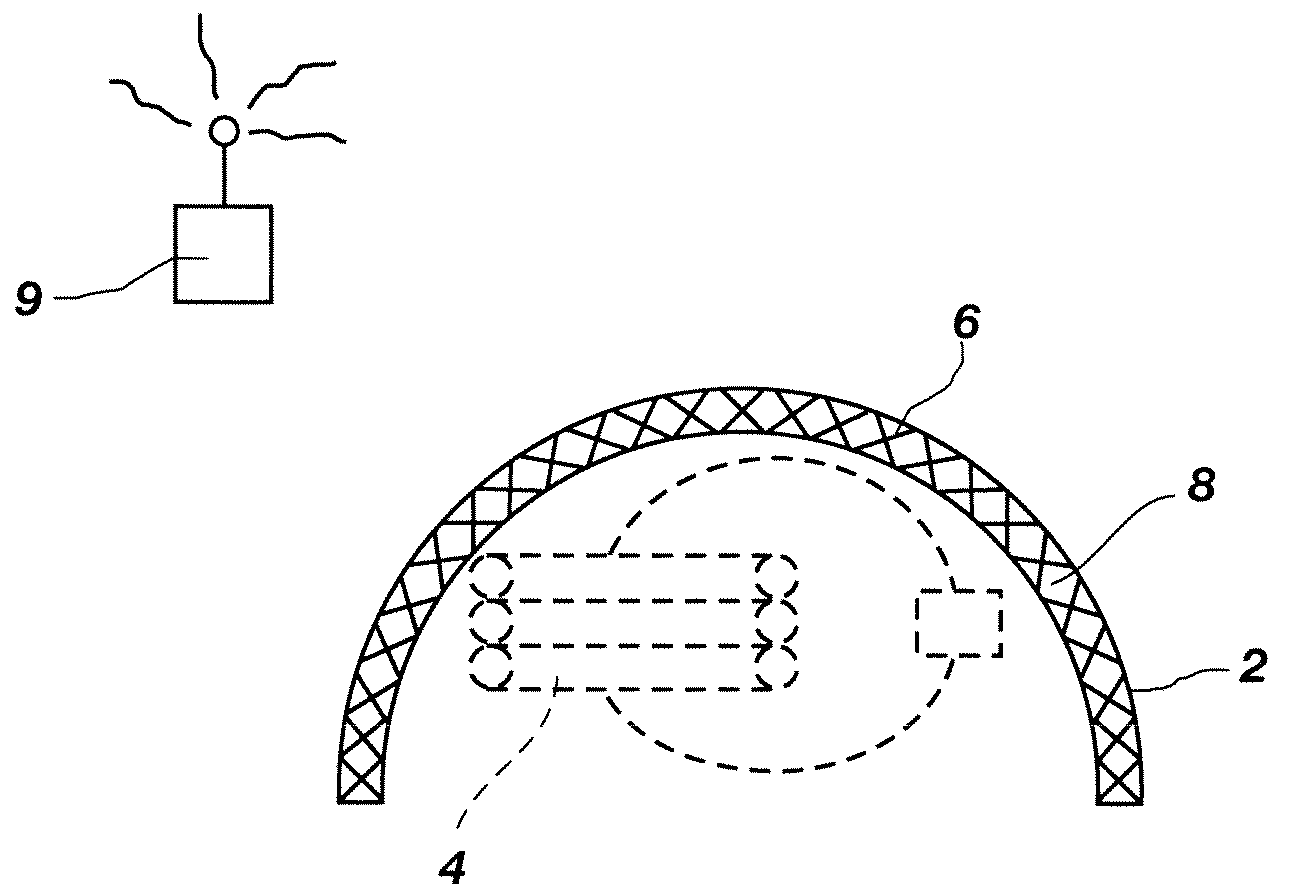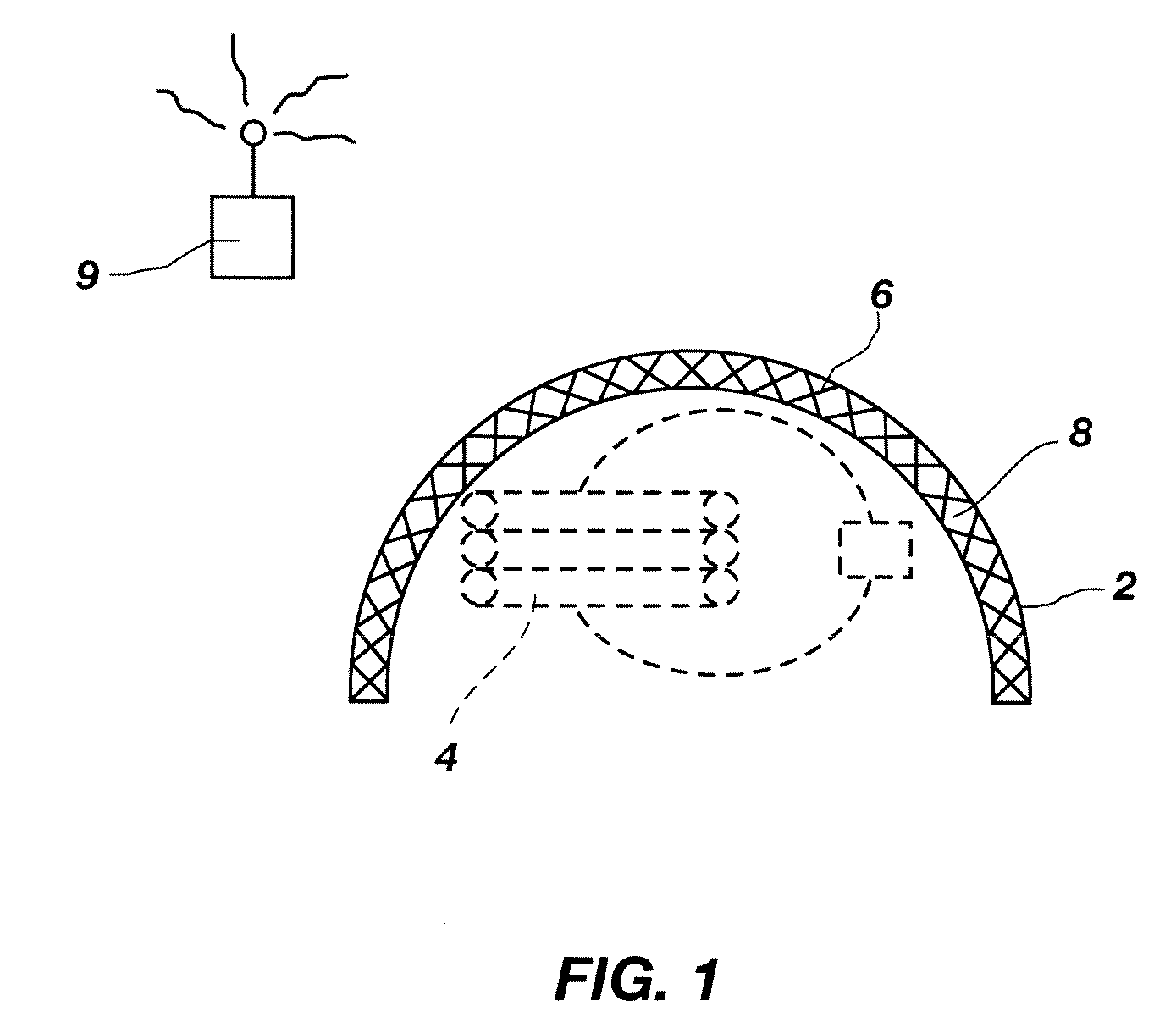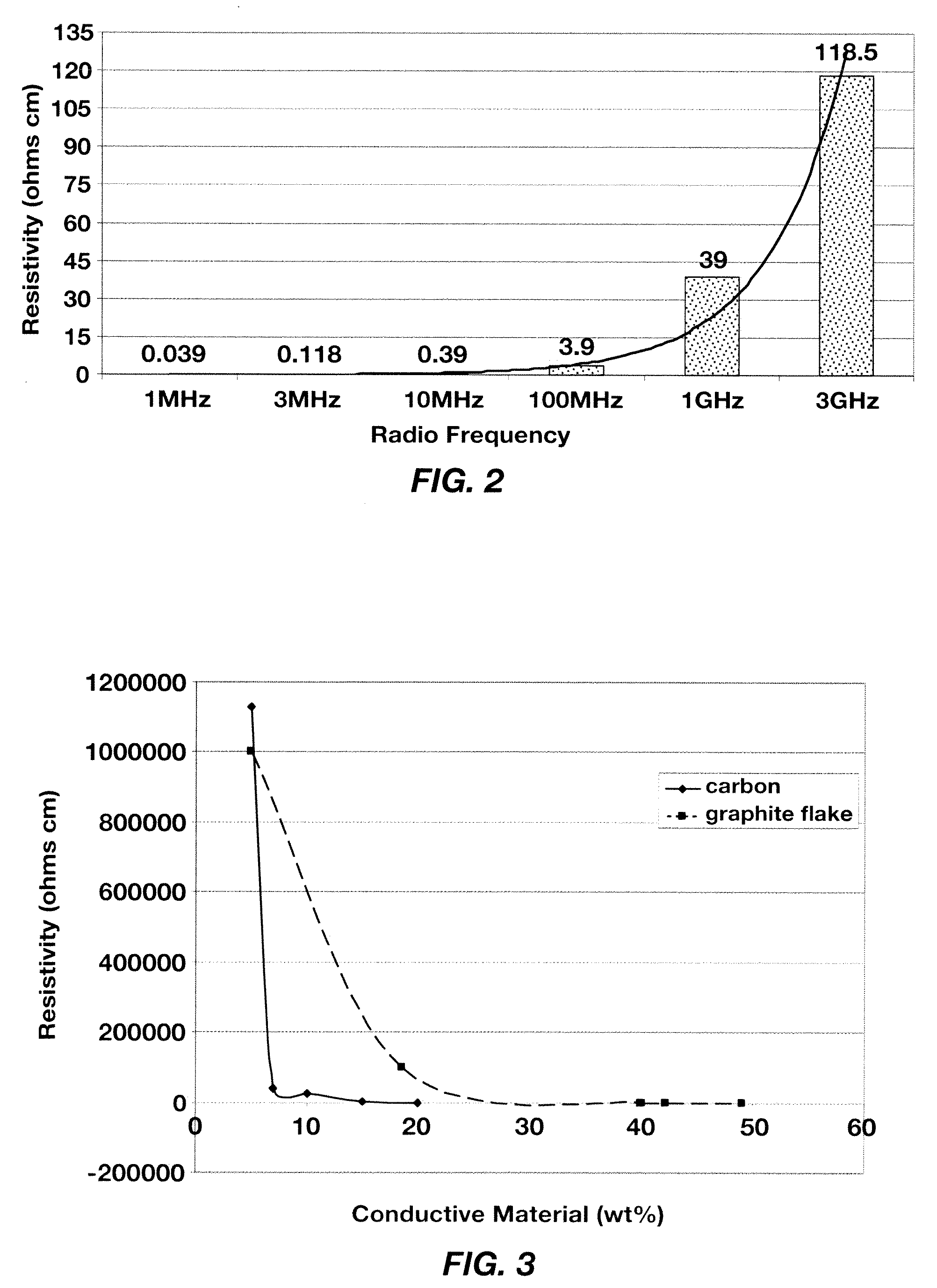Methods of preventing initiation of explosive devices, deactivated explosive devices, and a method of disrupting communication between a detonation device and an explosive device
a technology of explosive devices and deactivation devices, applied in the field of electromagnetic radiation disruption, can solve the problems of difficult deactivation of explosive devices and significant threat to military and law enforcement personnel of explosive devices, and achieve the effect of low volume resistivities and low volume resistivities
- Summary
- Abstract
- Description
- Claims
- Application Information
AI Technical Summary
Benefits of technology
Problems solved by technology
Method used
Image
Examples
example 1
Conductive Foam Including Conductive Carbon and Polyurethane
[0043]A conductive foam including conductive carbon black and polyurethane was produced by preparing a first solution of 1,4-butanediol, conductive carbon, dibutyl tin diacetate, and methylene chloride. The conductive carbon was Vulcan® XC72R. A second solution of Desmodur® N-100 was rapidly mixed with the first solution. The resulting foam-generating composition included 20% conductive carbon, 14.7 wt % 1,4-butanediol, 65.29 wt % Desmodur® N-100, 0.01 wt % dibutyl tin diacetate, and 9.0 wt % methylene chloride. Heat generated by the polymerization reaction produced volatilization of the methylene chloride, expanding the 1,4-butanediol as the 1,4-butanediol crosslinked. The conductive foam included 21% conductive carbon black and 79% polyurethane (the reaction product of the Desmodur® N-100 and the 1,4-butanediol).
example 2
Conductive Foam Including Conductive Graphite and Polyurethane
[0044]A conductive foam including conductive graphite flake and polyurethane was produced by preparing a first solution of 1,4-butanediol, conductive graphite flake, dibutyl tin diacetate, and methylene chloride. A second solution of PAPI was rapidly mixed with the first solution. The resulting foam-generating composition included 45% conductive graphite flake, 2.9 wt % 1,4-butanediol, 43 wt % PAPI, 0.1 wt % dibutyl tin diacetate, and 9.0 wt % methylene chloride. Heat generated by the polymerization reaction produced volatilization of the methylene chloride, expanding the 1,4-butanediol as the 1,4-butanediol crosslinked. The conductive foam included 51% conductive graphite and 49% polyurethane (the reaction product of the PAPI and the 1,4-butanediol).
example 3
Effect of Conductive Material on Volume Resistivity
[0045]To determine the effect of the amount of conductive material on the volume resistivity of the conductive foam, conductive foams including various amounts of conductive carbon or graphite were prepared in a manner similar to that described in Examples 1 and 2. The conductive foams were prepared from foam-generating compositions that included various loadings of the conductive carbon or of the graphite. The foam-generating composition from which the carbon-containing conductive foam was produced included the conductive carbon, Desmodur® N-100, dibutyl tin diacetate, 1,4-butanediol, and methylene chloride. The foam-generating composition from which the graphite-containing conductive foam was produced included graphite flake, PAPI, dibutyl tin diacetate, 1,4-butanediol, and methylene chloride. Conductive foams including from approximately 15 wt % to approximately 32 wt % of conductive carbon had low volume resistivities, as shown ...
PUM
 Login to View More
Login to View More Abstract
Description
Claims
Application Information
 Login to View More
Login to View More - R&D
- Intellectual Property
- Life Sciences
- Materials
- Tech Scout
- Unparalleled Data Quality
- Higher Quality Content
- 60% Fewer Hallucinations
Browse by: Latest US Patents, China's latest patents, Technical Efficacy Thesaurus, Application Domain, Technology Topic, Popular Technical Reports.
© 2025 PatSnap. All rights reserved.Legal|Privacy policy|Modern Slavery Act Transparency Statement|Sitemap|About US| Contact US: help@patsnap.com



